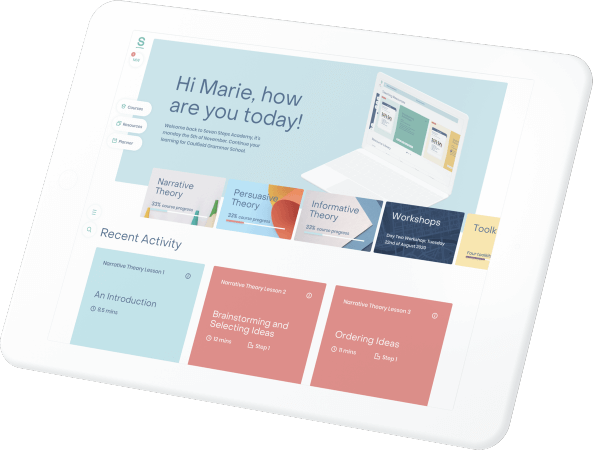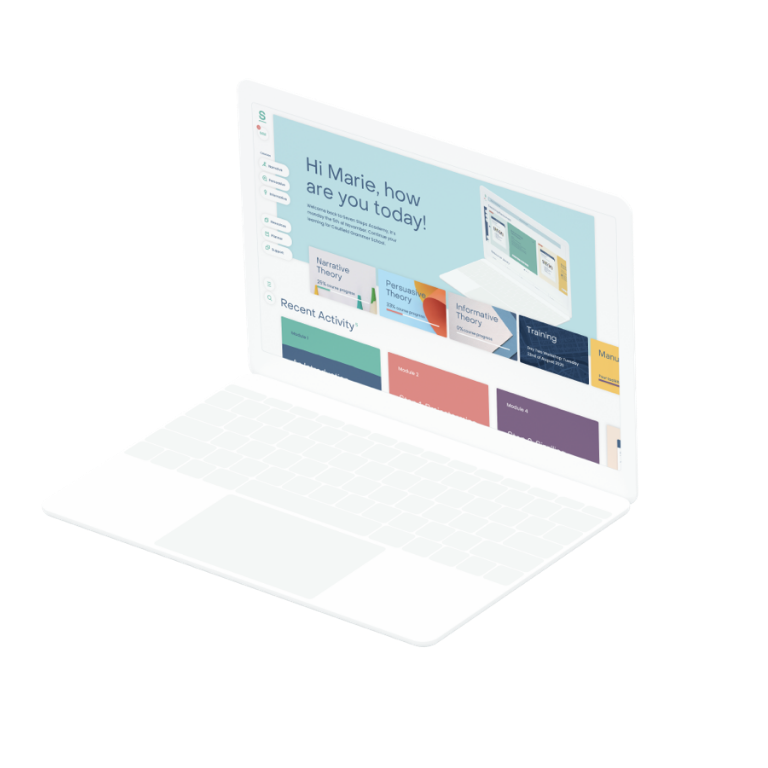No products in the cart.

4 min

Tips and insights

Admin SEVEN STEPS
Ask any author and they will tell you this … ideas are the most important part of creation and they take a long time. How do you get ideas? How much time do you spend coming up with ideas before you start writing?
First, try this test. Say just one word to students in your class: Writing.
Immediately ask them what picture comes into their mind. Chances are it will be of a person at a keyboard or writing at a desk with a pen, or a visual of a pen on paper. Not many students will visualise the first and most vital step in creating a piece of writing – brainstorming and creating ideas.

The importance of brainstorming
There is a misconception that ‘creativity’ is reserved for the special few, the gifted, the ones who invoke the muse by wearing a special hat and retreating to the silence of a special place. As a result, brainstorming – the generation of original ideas – is often not taught explicitly in classrooms.
According to Jackie French, ‘anyone who can daydream can create a story’. Furthermore, creativity can in fact be practised just like any other skill; ask any author, the more you write, the more easily the ideas flow. However, the generation of ideas needs one important element – time.
‘Ideas are like small plants sprouting in the compost of experience; it takes time and patience to find out if they turn into trees.’
Shaun Tan
Compare that to the pressure students are put under in a NAPLAN writing task. Students are asked to write a narrative or persuasive piece in 45 minutes with just 5 minutes of planning time. This model has led to the narrowing of planning time in normal classrooms, despite the fact that it is definitely not best practice.
The gifted and strong writers, who intuitively or have been explicitly taught to brainstorm and plan, are heavily penalised in this scenario. Authors are too. Take a look at Jen’s response to the NAPLAN writing tasks, the marks she received and her insights into the process of completing these tasks.

Ways of generating ideas
Fortunately, generating original and thought provoking ideas can vastly improve with training and practice. Research shows there are three common ways students, adults and authors generate ideas:
- Brainstorming – the process of quickly recording thoughts, imagery and ideas.
- Mind mapping or clustering – the process of associating other words, thoughts and ideas to a central word.
- Question-Asking – the ‘what if…?’ approach.
Training in any of these strategies will enhance students’ creativity and originality, although students may find they have a preference for a particular approach. The more visual learners will prefer mind maps, the more linear would go with bullet point ideas.
It is important to note that there is no ‘right’ way to generate original ideas; authors use multiple strategies:
‘The best place to start is with the characters…my best characters are part real world crossed with something unexpected…like the loud and obnoxious goldfish…often stolen from parts of my own character or that of someone I know…I am confident that once I have the character the rest will flow. Then sometimes it happens exactly the opposite way around. Idea first and then the character emerges.’
– Terry Denton
‘Stupid thoughts and absurd ideas that pop into your head are not necessarily so stupid or absurd. If something’s not quite right, try adding tentacles.’
Shaun Tan
The important thing is that all of these strategies tap into the free-flowing ‘alpha’ mode of thinking which is the basis for idea generation. A common term for this is ‘creative flow’.

Brainstorming is a form of imaginative research
It is commonly accepted that students can be allowed time to carry out research for informative and persuasive writing tasks, but the same time is often not allowed for imaginative research – the generation of ideas from scratch.
Ultimately, however, if we want more than ‘cookie cutter’ ideas, or the revamp of the latest TV show, we must allow students time for reflection, deep thinking and creative flow.
When we respect the time creating original ideas takes, we see a much greater richness in writing as a reward.
Download this free Lesson Plan:
Step 1: Plan for Success
Think Tank
Download for free >
This is an adapted version of an article by Jen McVeity, to read the full article please go to Education Matters Mag article.
[Related resource]: NAPLAN Writing Guide
Workshop One: Seven Steps to Transform Writing
Your perfect start to teaching the Seven Steps
Learn how to break down writing and build up student confidence.












